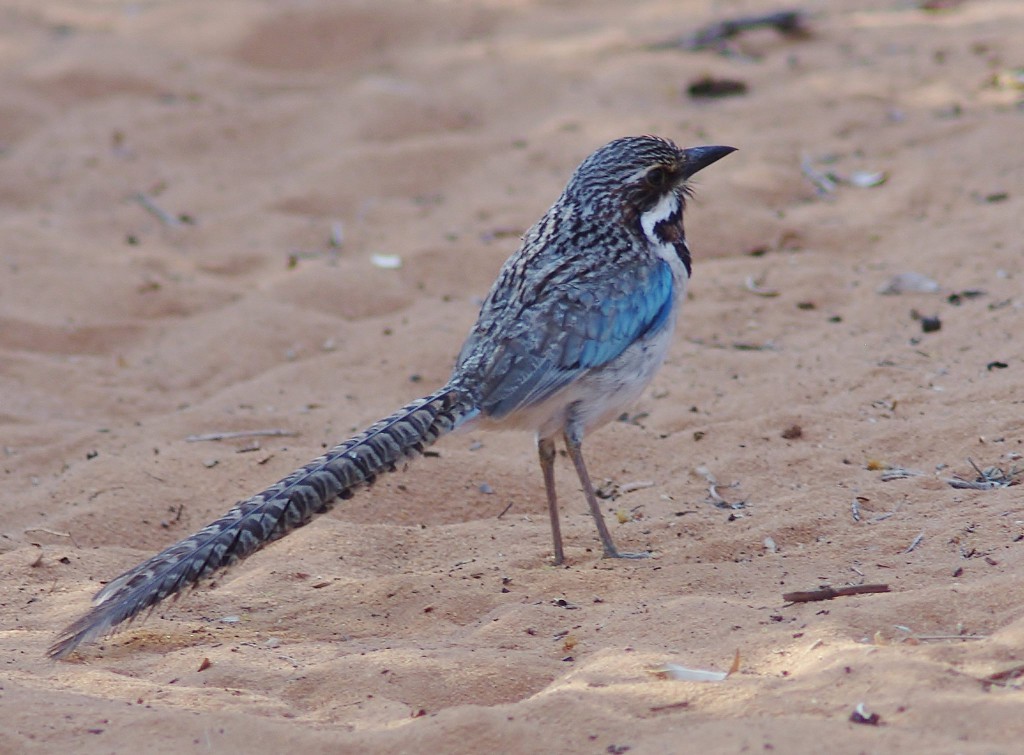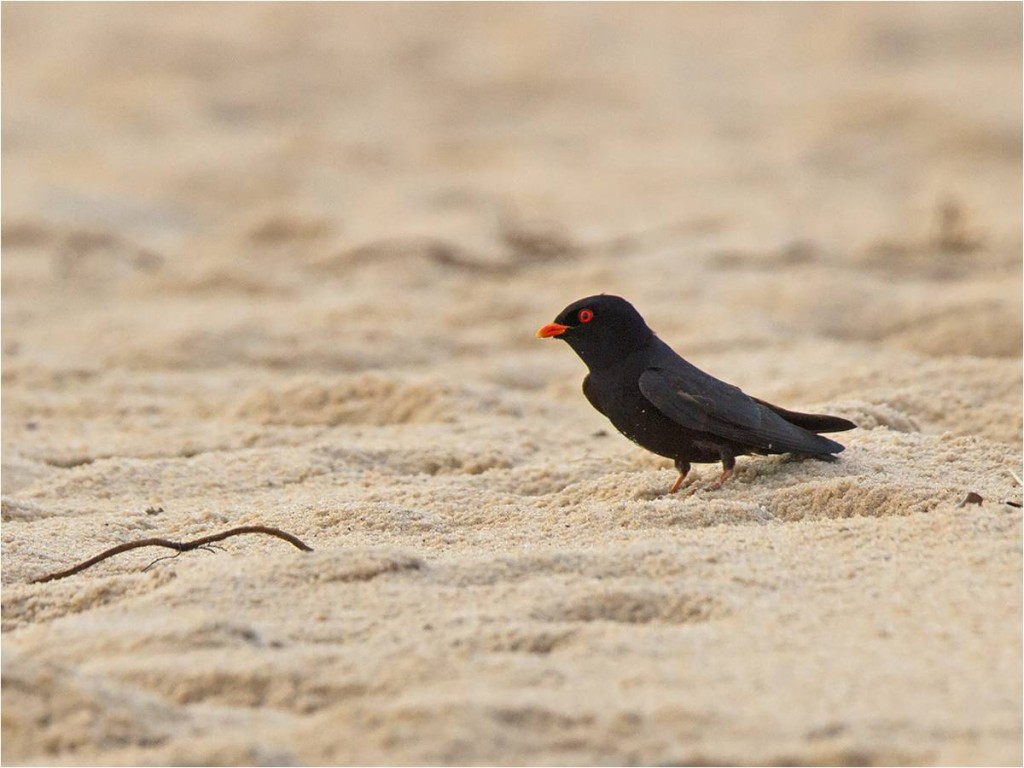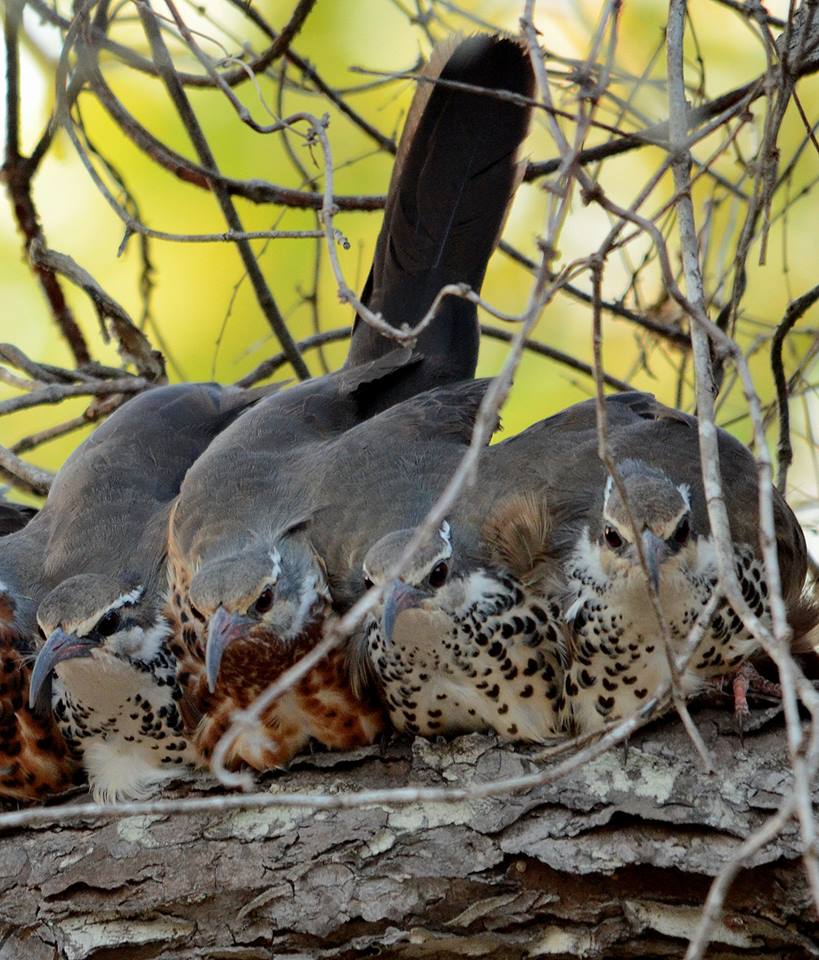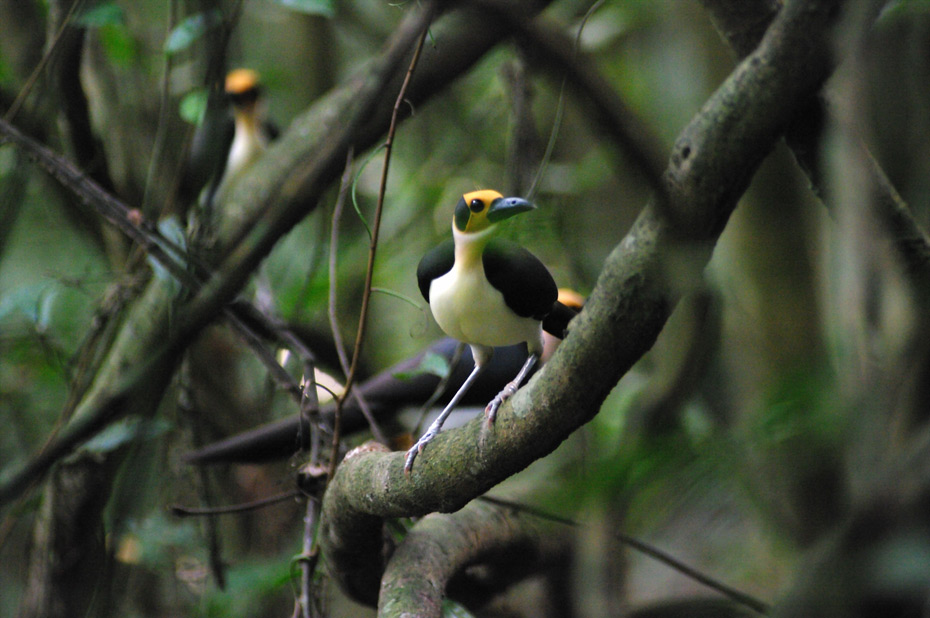Go to All Blogs | African Birding Blogs | Bird Conservation Blogs | All our birding tours
This note was written for the bulletin of the African Bird Club (ABC) and is published here on our blog with permission from them. We highly recommend you join the ABC if you want to contribute to bird conservation on the vast African continent.
Birding Ecotours donates a minimum of 10 % of its profits to bird conservation and will consider donating to your project – especially if it deals with one of the species listed below (or similar for other continents – we are currently in progress with lists of priority species for the other six continents). Please e-mail us at [email protected] if you have a possible project. We will usually also include a reputable conservation NGO in the process and supervision of the project – this might for example include the African Bird Club, Birdlife South Africa or Birdlife International.
Africa and Madagascar in context
Recently, sub-Saharan Africa has been shown to harbour a disproportionate share of the world’s avian genetic diversity (Lotz et al. 2013). While South America is well known for its incomparable bird species diversity, Africa’s fewer species are distributed across a much greater number of families. Colombia has 1,816 species in only 86 families, whereas an equal-sized area of East Africa (Tanzania / Uganda combined) has 1,324 species spread across a remarkable 103 families (using conservative species counts, with vagrant and introduced species removed; Lotz et al. 2013). East Africa must therefore contain greater avian genetic diversity than Colombia, when viewing relative diversity as the share of a phylogenetic tree rather than simply as the number of species: by counting only outer branches of a phylogeny (i.e. the species), one obtains an inaccurate measure of the region’s real diversity. Present-day Africa retains a great many more survivors of the original Gondwana avifauna than anywhere else (Jetz et al. 2012), which explains its relatively large number of bird families (and genetic diversity).
Madagascar, on the other hand, supports low overall avian diversity at all taxonomic levels, since it has been isolated in time and space for longer than any other large landmass (it has been separated from India for 88 million years and from other landmasses for much longer; e.g. Goodman & Benstead 2005, Vences et al. 2009). Madagascar broke away from India and gradually drifted towards the African continent, while India merged with the rest of Asia. However, because of this extremely lengthy isolation, Madagascar now contains many endemic genera and even several unique families (not only species) found nowhere else on the planet.

The need to consider taxonomy
As already mentioned, it is important to look beyond just species (and rather at the phylogeny as a whole) when deciding which areas require the most urgent conservation action. According to Jetz et al. (2014), a mere 10 % of the world’s currently recognised species (the most evolutionarily distinct ones) disproportionately represent a third of the total evolutionary diversity of all birds! Not all species are of equal taxonomic value. Generally, two species resulting from a controversial split will be genetically more similar to one another than two ‘traditional’ species are to each other, and furthermore, two long-accepted species belonging to the same genus will, of course, share more genes (and be evolutionarily less distinct) than two species in different genera. If one’s aim is to maximise the protection of genetic diversity, then it is obviously more important not to lose an entire monospecific genus (or family) than it is to lose a single species from a polytypic genus. But there is a very real risk of entire genera—and all their unique genes—becoming extinct, because current Red list assessments have classified all species of some genera as globally threatened (or a monotypic genus as threatened).
In this note, I highlight what could be the ‘worst’ losses (from the perspective of higher taxonomic levels) in Africa. Undoubtedly, we must do our best to protect any species from extinction, but the species tabulated below are meritorious of our most supreme efforts. As an example (from Rheindt 2006), some previously recognised Phylloscopus warbler species are younger than expected based on molecular evidence, whereas several potential (cryptic) species in the same genus are slightly more divergent than previously thought (perhaps indicating they should be split), but the point I am making here is that branches of the phylogeny that are only c.1 million years old (whether split or not) obviously contain far less genetic diversity than species that are much older than this. (Of course, genus and family-level taxonomy are far from completely stable, but the point remains that by looking beyond just species enhances the accuracy of an assessment aimed at conserving maximum genetic diversity).
Now that a comprehensive bird phylogeny has been attempted (Jetz et al. 2012), the EDGE of existence programme is starting to elucidate the world’s top 100 birds that are both ‘Evolutionarily Distinct and Globally Endangered’. EDGE species do not have any close relatives, are genetically very unique and are extremely distinct in their appearance and behaviour. ‘If they disappear, there will be nothing like them left on the planet’ according to EDGE (which also provides background to the science behind the EDGE project). A good example is provided by the Dodo Raphus cucullatus: when this highly unique species became extinct, there was simply nothing like it left.

The Jetz avian phylogenetic tree will permit EDGE researchers to measure the evolutionary distinctness of each bird species, thereby demonstrating which are the most unique, with the aim of ensuring these species are conserved (as a priority) and ultimately minimising total losses of genetic diversity and evolutionary history. The assumption is that resources are too limited to conserve every species, hence the potential need (under certain circumstances) to prioritise relatively unique ones as more important than less distinct ones. Of course, maximising the degree of genetic diversity conserved is not the sole aim of conservation. But, if Shoebill Balaeniceps rex became extinct, the planet would lose much more biological diversity than if a Phylloscopus warbler went extinct but was survived by a very close sister species that is treated as Least Concern.
It should also be noted that conservation priorities are also governed by factors such as the cost of protecting a certain species, the likelihood of success and which species a monetary donor selects for protection. While conservation is a balance between complex political and scientific considerations, if all other factors are equal, then it seems better to ensure that families and genera do not go extinct, as a greater priority than species. Here, I tabulate Africa’s families and genera that consist entirely of one to three threatened species, meaning that unless these taxa are urgently conserved, we would lose a disproportionate quota of avian evolutionary distinctness. I then also provide recommendations as to how to potentially focus our approach to conservation of birds in Africa and its islands.
| Taxon | Notes |
| Four families comprised entirely of Vulnerable species: | |
| Shoebill Balaeniceps rex (Family Balaenicipitidae) | Sometimes even placed in its own order |
| Secretarybird Sagittarius serpentarius (Family Sagittariidae) | |
| Both White-necked Picathartes Picathartes gymnocephalus and Grey-necked Picathartes P. oreas (Family Picathartidae) | |
| All three mesites, Subdesert Mesite Monias benschi, White-breasted Mesite Mesitornis variegatus and Brown Mesite M. unicolor, a family comprising just these three species, all of them endemic to Madagascar (Family Mesitornithidae) | One of the three species, Subdesert Mesite, is placed in its own genus, meaning that Monias is restricted to a tiny range in the South Malagasy Spiny Forests Endemic Bird Area (EBA) and occurs in just one Important Bird Area (IBA), Mikea Forest, which is not formally protected (Project ZICOMA 2001). |
| One Critically Endangered genus: | |
| Gough Bunting Rowettia goughensis | The species is seriously threatened by introduced mouse predation, which has forced the population to use suboptimal habitat (https://www.birdlife.org/datazone/speciesfactsheet.php?id=9477) |
| Five Endangered genera: | |
| Madagascar Serpent Eagle Eutriorchis astur | In contrast, as an example, Madagascar Fish Eagle Haliaeetus vociferoides, Critically Endangered, were it to become extinct, it would be survived by nine other congeners). |
| Udzungwa Forest Partridge Xenoperdix udzungwensis | |
| Hooded Vulture Necrosyrtes monachus | |
| Humblot’s Flycatcher Humblotia flavirostris | |
| Ethiopian (Stresemann’s) Bush-crow Zavattariornis stresemanni | |
| Twenty “Vulnerable” genera: | |
| Blue-winged Goose Cyanochen cyanoptera | |
| Lappet-faced Vulture Torgos tracheliotos | |
| White-headed Vulture Trigonoceps occipitalis | |
| Martial Eagle Polemaetus bellicosus | |
| Inaccessible Rail Atlantisia rogersi | St. Helena Crake A. podarcus is extinct, leaving this Vulnerable species as the sole extant representative of the genus. |
| Black Crowned Crane Balearica pavonina is Vulnerable, and Grey Crowned Crane B. regulorum is Endangered | |
| Wattled Crane Bugeranus carunculatus | Some lists lump this genus with Grus |
| Great Bustard Otis tarda | Not an African endemic (its conservation is best tackled in Eurasia) |
| Swynnerton’s Robin Swynnertonia swynnertoni | |
| The Heteromirafra larks: Rudd’s Lark H. ruddi, Sidamo (Liben) Lark H. sidamoensis (includes Archer’s Lark H. archeri, with which it is now lumped). | Rudd’s Lark, a Vulnerable South African endemic, occurs almost entirely on unprotected farmland—85% of the world population occurs within the proposed Grassland Biosphere Reserve, IBA SA020 (Barnes 1998, 2000), while Sidamo Lark is considered likely to become the next African bird to go extinct, with < 250 individuals remaining (www.birdlife.org/datazone/speciesfactsheet.php?id=8123). |
| Northern Bald Ibis Geronticus eremita and Southern Bald Ibis G. calvus: the former is Critically Endangered, the latter Vulnerable. | Although the genus is not endemic to Africa, its conservation in Africa is of paramount importance, with Morocco and South Africa being the critical range states |
| Marbled Teal Marmaronetta angustirostris | Not an African endemic (its conservation is best tackled in Eurasia) |
| Congo Peacock Afropavo congensis | |
| Grauer’s (African Green) Broadbill Pseudocalyptomena graueri | Recent habitat destruction in the DRC might mean that its stronghold lies in Uganda within a single reserve, Bwindi Impenetrable National Park. |
| São Tomé Shorttail Amaurocichla bocagii | |
| Bernier’s Vanga Oriolia bernieri | |
| Helmet Vanga Euryceros prevostii | |
| Both Brachypteracias ground rollers, Short-legged B. leptosomus and Scaly Ground Rollers B. squamiger | |
| Long-tailed Ground Roller Uratelornis chimaera | |
| Both or all three (depending on how many species are recognised) Nesospiza buntings of the Tristan da Cunha archipelago: the ‘controversial’ species Wilkins’s Bunting N. wilkinsi is Endangered, whereas Inaccessible Bunting N. acunhae and Nightingale Bunting N. questi are Vulnerable. | |
| Sixteen “Near Threatened” genera: | |
| The genus Phoebetria: Sooty Albatross P. fusca (Endangered) and Light-mantled Sooty Albatross P. palpebrata (Near Threatened) | Not African endemics |
| Cinereous Vulture Aegypius monachus | Not an African endemic (its conservation is best tackled in Eurasia) |
| Crowned Eagle Stephanoaetus coronatus | |
| Bateleur Terathopius ecaudatus | |
| Madagascar Crested Ibis Lophotibis cristata | |
| Lesser Flamingo Phoeniconaias minor | Not endemic to Africa, but the bulk of its population is found on the continent |
| Rouget’s Rail Rougetius rougetii | |
| Houbara Bustard Chlamydotis undulata | |
| Little Bustard Tetrax tetrax | |
| Dupont’s Lark Chersophilus duponti | Not endemic to Africa. |
| Madagascar Yellowbrow Crossleyia xanthophrys | |
| Tristan Thrush Nesocichla eremita | |
| Angola Cave Chat Xenocopsychus ansorgei | |
| Bush Blackcap Lioptilus nigricapillus | |
| The genus Kupeornis: White-throated Mountain Babbler K. gilbert (Endangered), Red-collared Babbler K. rufocinctus (Near Threatened) and Chapin’s Babbler K. chapini (Near Threatened) | |
| White-tailed Warbler Poliolais lopezi | |
| Three Data Deficient genera: | |
| Maned Owl Jubula lettii | |
| African River Martin Pseudochelidon eurystomina | |
| Emerald Starling Coccycolius iris | Taxonomically enigmatic and sometimes lumped within the genus Lamprotornis: first, we need to elucidate how genetically different it is from Lamprotornis, and if very different, then it will become even more urgent to discover the level of threat it faces |

Recommendations
- BirdLife International and other conservation organisations should clearly mention phylogenetic uniqueness (along with Red Data categories) on their websites (for example, in their species factsheets) and in their printed publications. This will help clarify which species harbour the largest proportions of evolutionary distinctness (or genetic diversity).
- Not only species, but also genera, families, and orders of threatened birds should be assessed whenever conservation is considered. Literature for other taxonomic groups (e.g. primates and amphibians) highlights the need to examine taxonomic levels above species (e.g. Rodrigues & Gaston 2002, Kallimanis et al. 2012), yet work on birds often ignores this.
- As avian phylogeny becomes better resolved, we can add precision to our avian conservation prioritisation (as Jetz et al. 2014 started to do), but in the meantime the current list of threatened genera and species in Africa shows where resources could be spent. Jetz et al. (2014) strongly highlighted Madagascar as one of the world’s greatest conservation priorities; the current table is consistent with this and also provides specific birds and sites to consider within Madagascar. What we now need is to focus more closely on Madagascar (and other areas highlighted herein and by Jetz et al. 2014) with better-resolved phylogenies: my method is the best we have for roughly prioritising bird conservation at higher taxonomic levels (thus helping to conserve as much genetic diversity and evolutionary distinctness as possible). The ideal situation is to measure distance (on the phylogeny) between all the taxa but failing that, threatened genera and family lists are obviously extremely helpful (and considerably better than solely examining species).
- Important Bird Areas (IBAs) and Endemic Bird Areas (EBAs) containing threatened genera and families (listed above) might be prioritised by taxonomic weighting—the EDGE species initiative is a good one in this regard. Specifically, formal and strict protection should be given to certain IBAs such as South Africa’s Grassland Biosphere Reserve (to protect Heteromirafra) and Madagascar’s Mikea Forest (for its unique mesite and ground roller, among others). While the entire IUCN threatened bird list is extremely important, if inadequate resources are available, then the highest priorities to perhaps consider first are listed in this note, and protected areas could be weighted accordingly. All IBAs need to be protected, but even greater priority needs to be given to those containing EDGE species, some of which are not yet officially protected!
- I suggest that research on the Data Deficient species mentioned in my list, African River Martin, Maned Owl and Emerald Starling, should be a priority. In the case of Emerald Starling, even the species’ systematic placement is unclear.
- It is important to conserve subspecies, recently split species and even populations, but it is most important to ensure that genera and families are conserved. Research and conservation efforts at higher taxonomic levels should be prioritised (all other things being equal). If we continue to focus on the outer branches of the phylogeny (species), then we might conserve the greatest number of species, yet lose an unacceptable proportion of the 30% of avian genetic diversity contained in just 10% of the world’s bird species (Jetz et al. 2014).

Acknowledgements
I thank Dylan Vasapolli, Jason Boyce, Michael Cherry, John Caddick, and Monika Forner for insights and for helping to collate lists and references, and Ron Demey, Guy Kirwan, Lincoln Fishpool and Stuart Butchart for constructive comments which helped improve the manuscript.
References
Barnes, K. N. (ed.) 1998. The Important Bird Areas of Southern Africa. Johannesburg: BirdLife South Africa.
Barnes, K. N. (ed.) 2000. The Eskom Red Data Book of Birds of South Africa, Lesotho and Swaziland. Johannesburg: BirdLife South Africa.
Project ZICOMA. 2001. Madagascar. In Fishpool, L. D. C. & Evans, M. I. (eds.) Important Bird Areas in Africa and Associated Islands: Priority Sites for Conservation. Newbury: Pisces Publications & Cambridge, UK: BirdLife International.
Goodman, S. M. & Benstead, J. P. 2005. Updated estimates of biotic diversity and endemism for Madagascar. Oryx 39: 73–77.
Jetz, W., Thomas, G. H., Joy, J. B., Hartmann, K. & Mooers, A. O. 2012. The global diversity of birds in space and time. Nature 491: 444–448.
Jetz, W., Thomas, G. H., Joy, J. B., Redding, D. W., Hartmann, K. & Mooers, A. O. 2014. Global distribution and conservation of evolutionary distinctness in birds. Current Biol. 24: 919–930.
Kallimanis, A. S., Mazaris, A. D., Tsakanikas, D., Dimopoulosa, P., Pantis, J. D. & Sgadelis, S. P. 2012. Efficient biodiversity monitoring: which taxonomic level to study? Ecol. Indicators 15: 100-104.
Lotz, C. N., Caddick, J. A., Forner, M. & Cherry, M. I. 2013. Beyond just species: is Africa the most taxonomically diverse bird continent? S. Afr. J. Sci. 109(5/6): https://dx.doi.org/10.1590/sajs.2013/20120002.
Rheindt, F. E. 2006. Splits galore: the revolution in Asian leaf warbler systematics. BirdingASIA 5: 25–39.
Rodrigues, A. S. L. & Gaston, K. J. 2002. Maximising phylogenetic diversity in the selection of network of conservation areas. Biol. Conserv. 105: 103–111.
Vences, M., Wollenberg, K. C., Vieites, D. R. & Lees, D. C. 2009. Madagascar as a model region of species diversification. Trends Ecol. & Evol. 24: 456–465.
Birding Ecotours, PO Box 215, Newlands 7725, South Africa.
Received 6 January 2014; revision accepted 28 October 2014.
